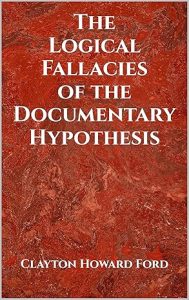Lesson 2
A third objection is, “The Bible as we now have it is not what was originally written.” This objection can take two forms. One is that changes were accidentally made to the Bible so that we can no longer trust that we have what the authors originally wrote. The other form is that changes were made deliberately by the religious leaders to foist their beliefs upon their unsuspecting followers.
The original books of the New Testament were written on papyrus or parchment. Tertullian, who wrote in 200 AD, said that the original books could still be seen in the Churches in his day.
However, these books eventually decayed, so copies had to be made by hand. When those copies decayed, they were copied by hand. Over the years, scribes made copies of copies of copies of copies. Some of those copies have survived, but the original books have not. Of course, in the process of making these copies, mistakes were made, which is why some people say that we cannot trust that what we have is what the authors originally wrote.
Every ancient book has undergone this process of being copied by hand, including Homer’s Iliad and Caesar’s Gallic Wars. In each case, scholars wish to know what the author had originally written. To find out, they use a process called textual criticism.
Textual critics look for two important factors when studying the hand-written copies of any book. The first is age. The older a copy is, the closer it was to the original, and therefore less likely to have mistakes. The second factor is the number of copies. If we have eight copies and four of them say one thing and four say another, it is difficult to know which ones are correct. But if we have 5000 copies and 100 say one thing and the other 4900 say another thing, we have a better idea of which ones are correct. Look at these famous ancient works and notice how few copies we have:
Time of Oldest Gap Number of
Author Writing Copy (Years) Copies
Aristotle (Poetics) 343 BC 1100 AD 1400 5
Plato (Tetralogies) 427-347 BC 900 AD 1250 7
Herodotus (History) 480-425 BC 900 AD 1350 8
Thucydides 460-400 BC 900 AD 1300 8
Caesar (Gallic Wars) 100-44 BC 900 AD 950 10
Homer (Iliad) 800 BC 400 BC 400 643
Compare those numbers with those of the New Testament. The last book of the New Testament was written around 80-90 AD. The oldest copy of the almost complete New Testament was written around 325-350 AD, a gap of only 270 years.
The oldest copy of a portion of the New Testament contains John 18:31-33 and 37, and it was written around 130 AD, only 50 years later.
We currently have over 5000 copies of the New Testament or portions of it in the Greek and almost 20,000 more copies in other languages.
The small gap between the original writings and the oldest copies as well as the sheer number of copies makes the New Testament the easiest text to reconstruct and assures us that the copies which we read in our homes are in fact reliable copies of the original text. Some textual critics have even said that the New Testament copies are more reliable than any ten ancient literary works combined.
The story with the Old Testament is different. We do not have a large number of copies and the copies we do have are relatively young. The oldest complete Hebrew manuscript we have was written around 1000 AD, more than 1400 years after Malachi was written. However, we know that the Jews were very meticulous when making copies of the text, and burned the ones that contained mistakes, which is why we have so few copies. The discovery of the Dead Sea Scrolls, which were written around 300 BC to 100 AD, only confirmed that the copy which we have is very reliable, for the Scrolls agree quite well with it.
We must understand that the doctrine of the inspiration of the Bible only applies to the original writings and not to the copies. The copies do contain mistakes, but not as many as some would claim.
What we call mistakes, scholars call variants. The vast majority of these variants are trivial, such as the difference in the spelling of a word. If 20,000 copies have one spelling and 4,000 have another spelling, scholars count that as 4,000 variants. The verses in the New Testament that have variants are only 12.5% of all of the verses. Some variants do change the meaning of the text. Those verses come to only 1.66% of the entire New Testament. In other words, the copies have preserved 98.33% of the original writings. Compare that to Homer’s Iliad, which is only 95% preserved. And none of those verses affect the doctrines historically taught by the Christian Church.
The objection that the early Church leaders changed the Bible to make it say what they wanted it to say is absurd. The leaders would have had to gather the thousands of copies that were scattered all over the Roman Empire, destroy them, and then issue new copies, all without the rest of the Church being in the least bit suspicious. Impossible.
The objection that the Bible contains so many mistakes that it is not what the authors originally wrote is also absurd. God has seen to it that the copies have remarkably preserved 98.33% of the original writings and the differences are trivial.
So why did God not preserve 100% of the original? Probably because of our propensity for idolatry. As it is, some people have a relationship with their Bible but not with the author of the Bible. We must remember that the purpose of the Bible is to help us develop a close relationship with God, not replace him.








